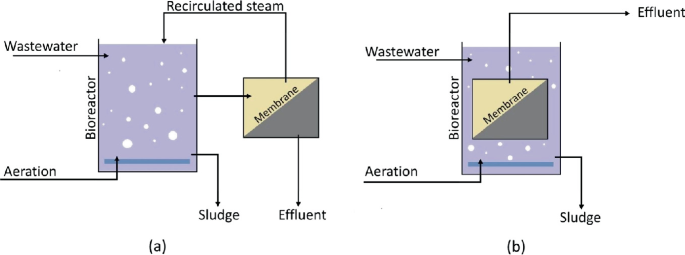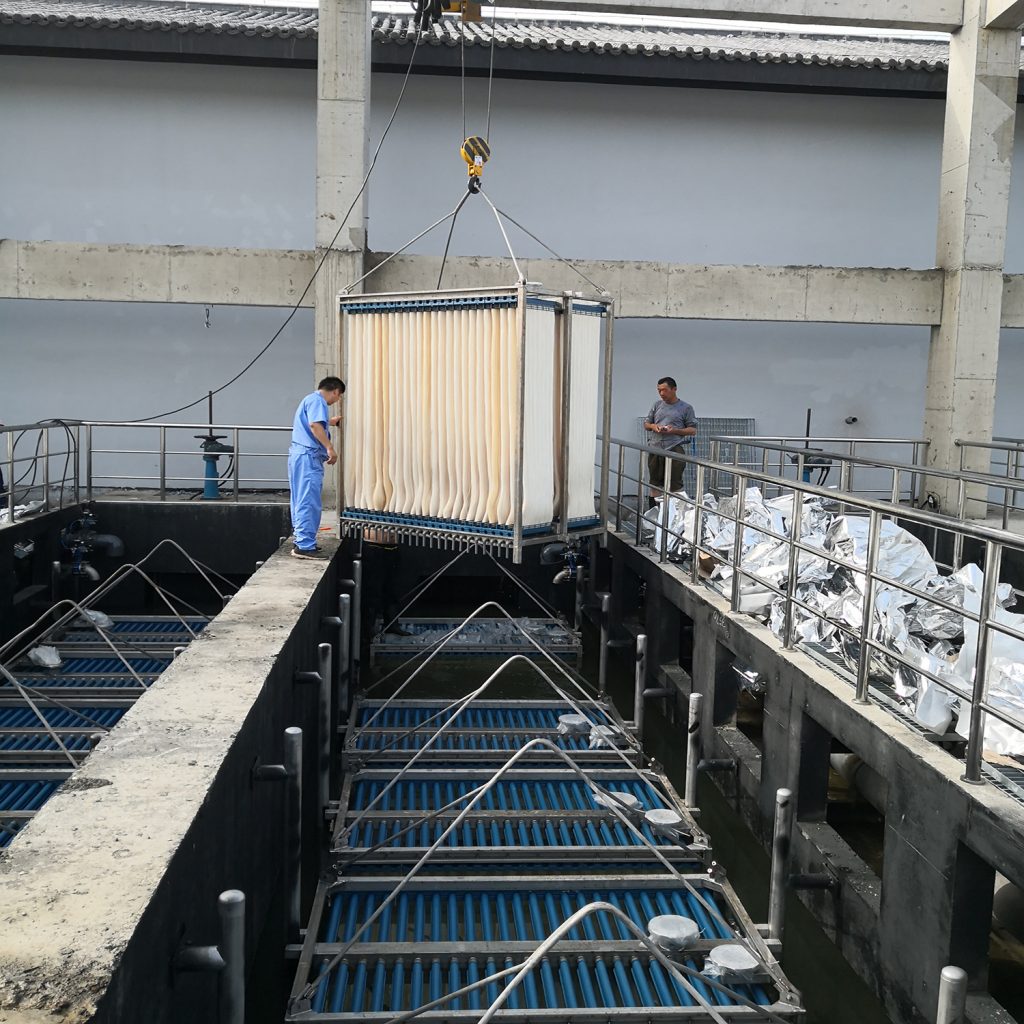Membrane Bioreactor Systems: A Key Technology for Water Reuse and Recycling
Membrane Bioreactor Systems: A Key Technology for Water Reuse and Recycling
Blog Article
Membrane Bioreactors Described: Reliable Solutions for Clean Water
Membrane layer bioreactors (MBRs) have become an advanced service for resolving journalism challenges of wastewater therapy. By incorporating biological processes with advanced membrane filtration, MBRs not only enhance the top quality of cured water but additionally reduce the spatial demands of therapy centers. As environmental worries heighten, the role of MBR innovation in advertising lasting water monitoring becomes significantly significant. Nonetheless, the complexities of their procedure, benefits, and potential applications merit a closer assessment to completely understand their influence on the future of water treatment.

What Are Membrane Bioreactors?
Membrane bioreactors (MBRs) are advanced wastewater therapy systems that combine biological degradation procedures with membrane filtering technology. This combination enables for the efficient removal of contaminants from water, making MBRs a preferred choice in different applications, including metropolitan wastewater treatment and commercial effluent management.

One of the crucial advantages of MBRs is their capacity to produce high-grade effluent, typically appropriate for reuse in watering or industrial procedures. In addition, MBRs call for a smaller footprint compared to conventional treatment systems, making them optimal for urban settings where space might be restricted.
Moreover, MBRs can efficiently manage varying influent lots and are less susceptible to the impacts of hazardous shocks. These characteristics add to their growing appeal as a sustainable solution for attending to the enhancing need for tidy water while minimizing ecological effects.
Exactly How Membrane Layer Bioreactors Job
While the operation of membrane bioreactors (MBRs) might appear complex, it fundamentally rotates around the synergy between organic processes and membrane filtering. MBRs incorporate a biological treatment procedure, generally turned on sludge, with a membrane layer splitting up device to treat wastewater efficiently.
In an MBR system, wastewater is initial presented right into a bioreactor where microbes weaken organic issue and various other pollutants. The organic task minimizes the concentration of toxins while advertising the development of biomass. Following this biological treatment, the combined alcohol undergoes membrane layer purification, which can be microfiltration or ultrafiltration, depending upon the desired effluent quality.
The membranes work as a physical obstacle, permitting water and small solutes to pass while preserving put on hold solids and larger particles. This makes it possible for the system to maintain a high concentration of biomass within the activator, enhancing the treatment efficiency.
In addition, the constant separation of cured water from the biomass promotes a compact style and lessens the footprint of the treatment center. Generally, the combination of organic deterioration and membrane layer filtration in MBRs results in dependable and efficient wastewater treatment, ensuring premium effluent ideal for numerous applications.
Advantages of MBR Technology
Among the key advantages of membrane bioreactor (MBR) innovation is its ability to produce high-quality effluent with a significantly minimized footprint compared to standard wastewater treatment methods. MBR systems properly integrate organic therapy and membrane filtering, resulting in premium removal of impurities, including suspended solids, microorganisms, and organic issue. Find Out More This capability causes effluent that usually meets or goes beyond stringent governing standards for reuse and discharge.
In addition, MBR innovation permits greater biomass concentrations, which enhances the treatment performance and decreases the called for reactor volume. This compact style is especially beneficial in urban locations where room is restricted. The operational adaptability of MBR systems likewise means they can adapt to varying influent top qualities and flow prices, making them ideal for a vast array of applications.
In addition, the decreased sludge manufacturing related to MBR procedures adds to decrease functional and upkeep expenses. The membrane layers offer as a physical barrier, lessening the risk of blocking and enabling longer functional periods between cleaning. In general, the benefits of MBR innovation make it an eye-catching service for sustainable wastewater treatment, dealing with both ecological problems and the requirement for efficient resource monitoring.
Applications of Membrane Layer Bioreactors
With their adaptability and performance, membrane layer bioreactors (MBRs) discover applications across various fields, including municipal wastewater treatment, industrial processes, and even water improvement. In municipal setups, MBRs offer a portable remedy for treating wastewater, properly removing contaminants while concurrently creating high-quality effluent that fulfills stringent regulative criteria. This makes them especially appropriate for areas with limited area.
In industrial applications, MBR innovation is used for treating procedure water, particularly in sectors such as food and beverage, drugs, and petrochemicals. These markets take advantage of MBRs' capability to handle high natural lots and their effectiveness in recovering useful resources from wastewater, such as nutrients and water.
Additionally, MBRs play an important duty in water reclamation initiatives, making it possible for the reuse of treated wastewater for irrigation, industrial procedures, and even as drinkable water after further treatment (Membrane Bioreactor). Their efficiency in removing pollutants and pathogens makes them a dependable selection for ensuring water top quality in numerous reuse applications
Future of Water Treatment Solutions
The future of water treatment solutions is poised for transformative innovations driven by technical development and raising ecological awareness. As international have a peek at this website water shortage comes to be a pressing issue, new methodologies, including membrane bioreactor (MBR) systems, are readied to play a critical duty in boosting the efficiency and sustainability of water treatment procedures.
Emerging technologies such as man-made knowledge and artificial intelligence are expected to maximize therapy procedures, permitting for real-time tracking and anticipating upkeep. This will certainly improve the total integrity and performance of water treatment centers. Moreover, innovations in membrane materials, such as graphene and nanofiltration, guarantee to enhance permeation rates and decrease fouling, bring about lower power intake and operational expenses.
Additionally, the combination of sustainable power sources right into water therapy plants will certainly contribute to greener techniques. The round click here to find out more economic situation design will certainly also obtain traction, urging the healing of valuable sources from wastewater, such as nutrients and power.
Verdict

Membrane bioreactors (MBRs) have arised as an advanced option for dealing with the pressing difficulties of wastewater therapy. By incorporating biological processes with sophisticated membrane filtering, MBRs not just boost the quality of cured water yet additionally decrease the spatial demands of treatment centers.One of the key benefits of membrane layer bioreactor (MBR) modern technology is its capability to create premium effluent with a substantially minimized footprint contrasted to conventional wastewater treatment approaches.With their versatility and performance, membrane bioreactors (MBRs) find applications throughout numerous sectors, including municipal wastewater treatment, industrial processes, and even water improvement.In conclusion, membrane layer bioreactors stand for a significant improvement in wastewater therapy modern technology, integrating biological processes with efficient membrane filtering to produce high-grade effluent.
Report this page